Loons, known for their haunting calls echoing across tranquil lakes, are iconic birds of the Northern Hemisphere. Belonging to the family Gaviidae, these waterfowl are renowned for their striking black-and-white plumage, sleek bodies, and dagger-like bills.
They are primarily found in freshwater habitats, such as lakes and ponds, where they dive underwater in search of prey, including fish, crustaceans, and aquatic insects.
Loons are exceptional swimmers and adept divers, capable of descending to considerable depths in pursuit of food. Their haunting calls serve various purposes, from territorial marking to communication with mates and offspring.
Despite their grace in water, loons face various threats, including habitat loss, pollution, and entanglement in fishing gear. Conservation efforts are crucial to ensure the preservation of these captivating birds and the ecosystems they inhabit.
Physical Characteristics of Loons
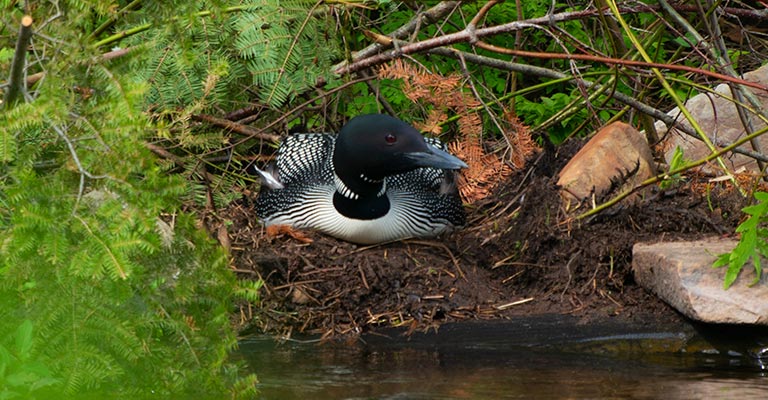
Identifying the majestic loon amidst its aquatic habitat is an endeavor enriched by its distinctive physical characteristics. Here are eight key points to aid in recognizing this iconic bird:
Plumage
The loon boasts a striking contrast of black and white plumage, which serves as a hallmark of its appearance.
Its back, head, and neck are predominantly glossy black, while its underside and sides are pristine white. This stark coloration facilitates camouflage against the rippling surface of lakes and ponds, where loons predominantly reside.
Body Shape
One of the most notable features of the loon is its streamlined body shape, perfectly adapted for underwater navigation.
Its body appears elongated and sleek, with a low-slung profile that aids in swift dives and agile swimming. This characteristic silhouette distinguishes it from other waterfowl.
Bill
The loon’s bill is another distinguishing feature, characterized by its sharp and pointed structure.
This dagger-like bill is designed for grasping and capturing prey underwater, particularly fish. Its sturdy construction enables efficient hunting and contributes to the bird’s overall aerodynamic form.
Red Eyes
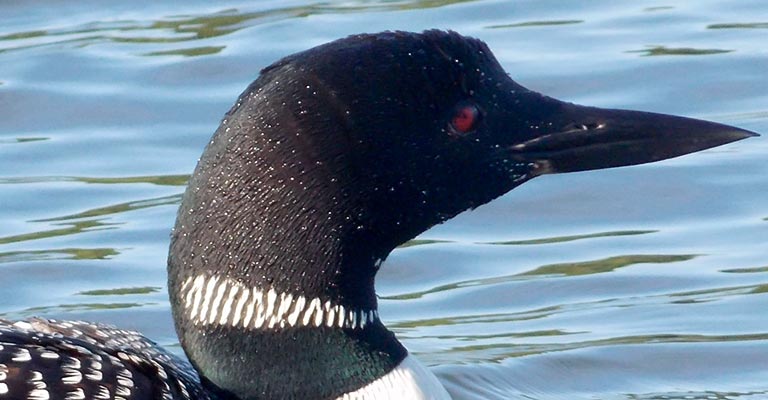
One of the most captivating aspects of the loon’s appearance is its striking red eyes. These crimson orbs stand out vividly against the bird’s contrasting plumage, adding to its enigmatic allure.
The intensity of the red hue varies depending on factors such as age and sex, but it remains a defining trait of loon identification.
Neck and Head Position
When observing a loon, pay attention to the position of its neck and head. While swimming or diving, the loon typically holds its neck straight and its head slightly raised.
This posture enhances its visibility above the water’s surface and aids in scanning for potential prey or threats.
Size
Loons are relatively large birds, with adults measuring around 28 to 36 inches in length, including their elongated necks and bills. Their wingspan can range from 4 to 5 feet, further accentuating their impressive size when in flight.
Legs and Feet
Loons possess legs positioned towards the rear of their bodies, which facilitates efficient propulsion underwater but hinders mobility on land.
Their feet are webbed, ideal for powerful swimming strokes, yet they are ill-suited for walking on solid ground. This adaptation underscores the loon’s affinity for aquatic habitats.
Call
While not a physical characteristic, the haunting call of the loon is unmistakable and plays a vital role in its identification. Their mournful wails, yodels, and tremolos resonate across lakeshores, adding an auditory dimension to their presence.
By familiarizing oneself with these distinct physical attributes, one can confidently identify the loon amidst its watery realm, appreciating its grace and resilience in its natural habitat.
Taxonomy of Loons
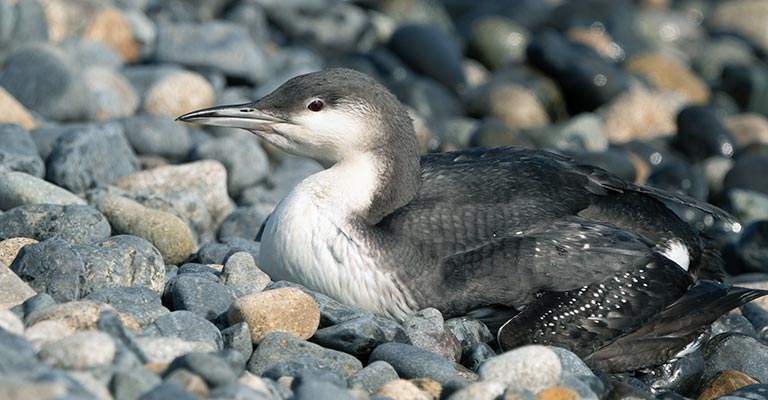
Here’s a table detailing the taxonomy details of the Loons:
| Taxonomic Rank | Classification |
| Domain | Eukaryota |
| Kingdom | Animalia |
| Phylum | Chordata |
| Class | Aves |
| Order | Gaviiformes |
| Family | Gaviidae |
| Genus | Gavia |
The five birds listed are indeed members of the loon family (Gaviidae) and share many characteristics with the common loon, but each has its own unique features and habitat preferences. Let’s explore each one:
Yellow-billed Loon (Gavia adamsii)
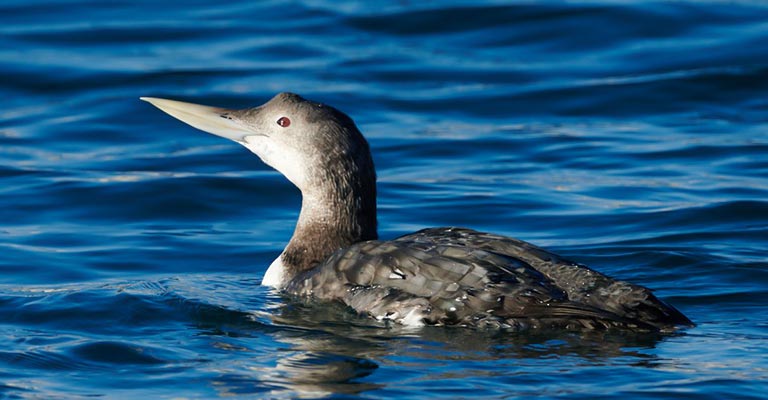
The Yellow-billed loon is known for its distinctive yellow bill, which sets it apart from other loon species. It typically inhabits remote northern freshwater lakes during the breeding season, often found in arctic or subarctic regions.
This species tends to have a more restricted range compared to other loons, with populations primarily found in North America and parts of Siberia.
Common Loon (Gavia immer)
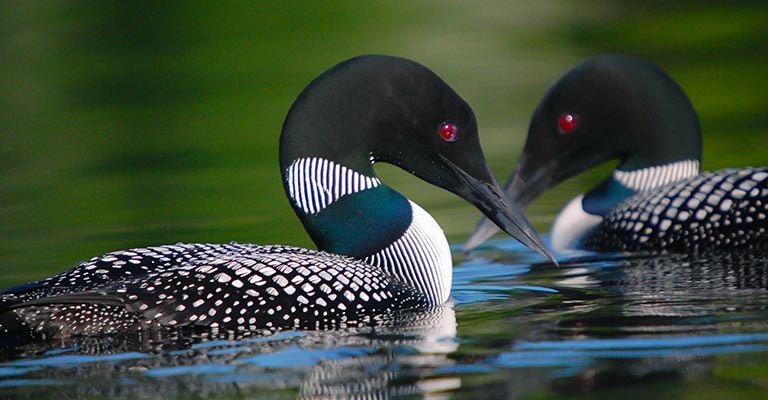
The Common loon, also known simply as the Great Northern Diver, is perhaps the most well-known of the loon species.
It has a striking black-and-white plumage, a dagger-like bill, and a haunting call that echoes across lakes. Common loons breed across northern North America and Eurasia, favoring freshwater lakes and large ponds surrounded by forests.
Pacific Loon (Gavia pacifica)
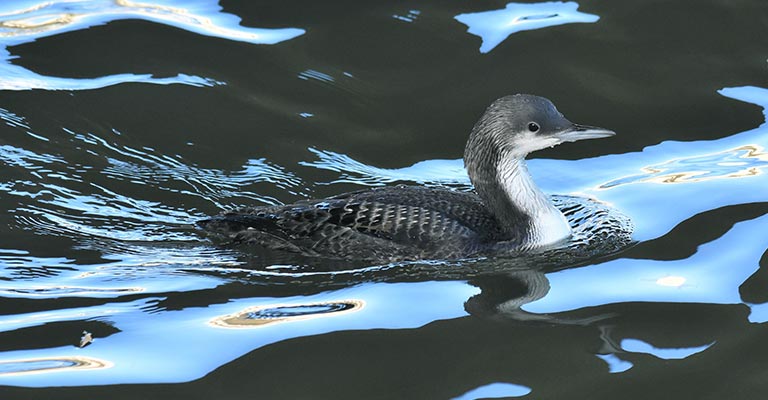
The Pacific loon is similar in appearance to the Common loon but has some subtle differences, including a smaller size and less contrasting plumage.
It is primarily found along the Pacific coast of North America during the breeding season, nesting in tundra habitats near freshwater lakes.
Pacific loons are known for their distinctive calls and can often be seen foraging for fish in coastal waters during migration.
Black-throated Loon (Gavia arctica)
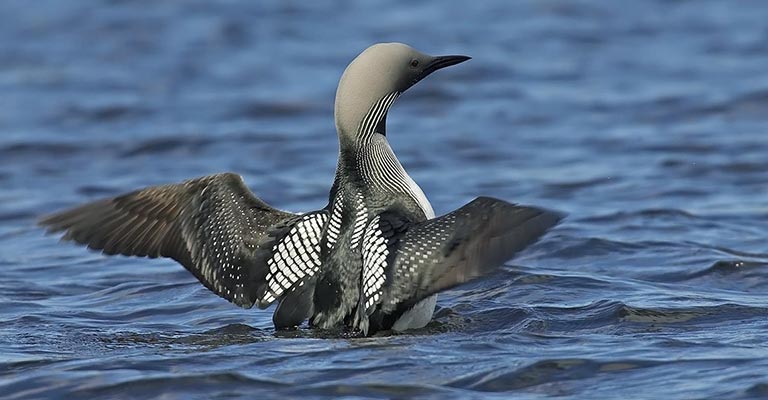
As the name suggests, the Black-throated loon is characterized by a black throat patch, which contrasts with its otherwise black-and-white plumage.
This species breeds in northern Europe and Asia, typically in subarctic and arctic regions, and migrates to coastal waters during the winter months.
Black-throated loons are skilled divers, capable of descending to considerable depths in search of prey.
Red-throated Loon (Gavia stellata)
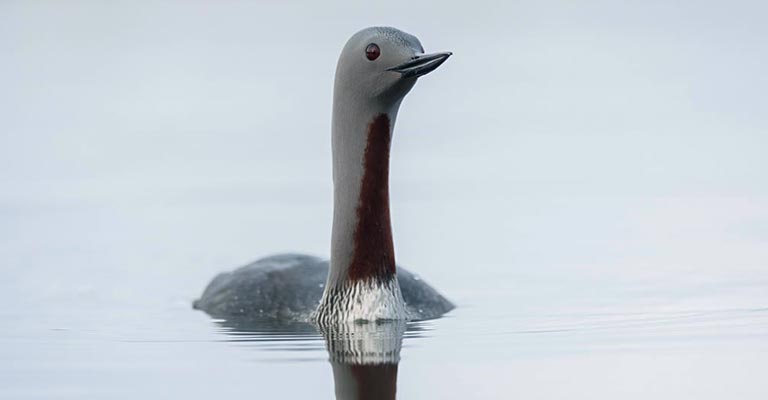
The Red-throated loon is easily identifiable by its smaller size and distinctive red-throat patch, which is more prominent during the breeding season.
It breeds in arctic and subarctic regions of North America, Europe, and Asia, often nesting near freshwater lakes or coastal marshes. Red-throated loons are agile swimmers and are frequently observed diving for fish and other aquatic prey.
While these loon species share many similarities, each has its own unique characteristics and ecological niche, contributing to the diversity and richness of avian life in their respective habitats.
Hunting Habit of Loons
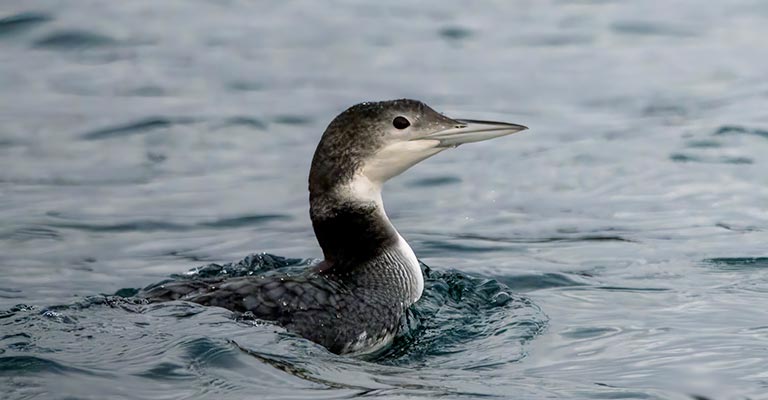
Loons are formidable hunters, specializing in underwater foraging for fish, crustaceans, and aquatic insects.
Leveraging their streamlined bodies and powerful legs, loons propel themselves underwater with remarkable agility, often diving to depths of up to 200 feet in pursuit of prey.
Their hunting technique involves stealthily approaching their target from below, aided by keen eyesight to detect movement in the water.
Once within striking distance, loons use their sharp bills to grasp and secure their catch, relying on their strong neck muscles to swallow prey whole.
Despite their proficiency underwater, loons are less agile on land, typically reserving their hunting efforts for their aquatic domain.
Their hunting habits are finely tuned to the rhythms of their freshwater habitats, making them efficient and successful predators in lakes and ponds across their range.
Loons Life History
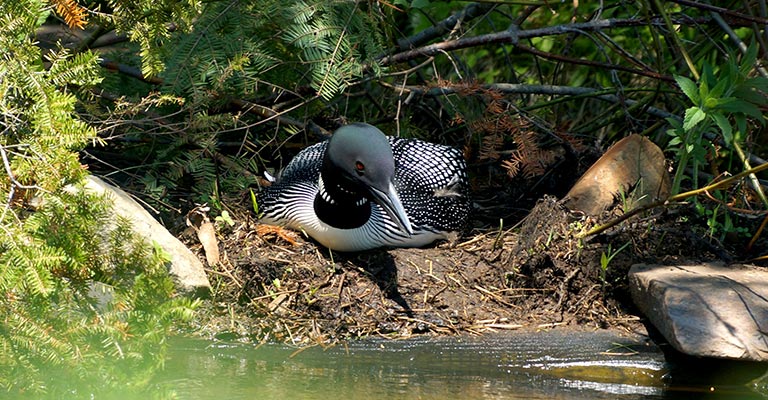
The life history of the loon, with its enigmatic calls echoing across serene lakes, is a testament to adaptability and resilience in aquatic habitats.
From its hunting prowess to breeding rituals and conservation challenges, the life of a loon is a compelling narrative shaped by its interactions with the natural world.
Food
Loons are skilled piscivores, primarily feeding on fish such as perch, trout, and sunfish.
They also consume crustaceans, mollusks, and aquatic insects. Their hunting technique involves underwater dives, where they use their streamlined bodies and powerful legs to pursue and capture prey.
Habitat
Loons inhabit freshwater lakes and ponds, preferring clear, unpolluted waters with abundant fish populations. During migration and winter, some species may venture into coastal areas or large bodies of water.
Range Map
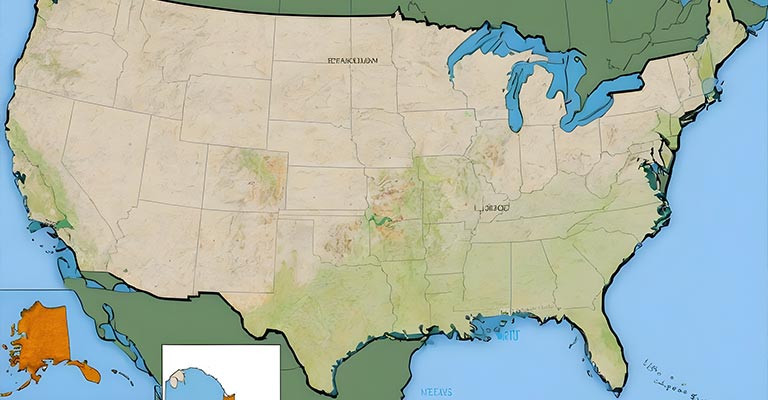
The range of loons varies among species. Common loons breed across northern North America and Eurasia, while Pacific loons favor the Pacific coast of North America.
Yellow-billed loons are found in arctic and subarctic regions, while Black-throated and Red-throated loons breed in northern Europe and Asia.
Breeding
Breeding season typically occurs in spring or early summer. Loons build nests near the water’s edge, often concealed among vegetation or on floating platforms.
Mated pairs engage in elaborate courtship displays and share incubation duties until the eggs hatch. Chicks are precocial and capable of swimming shortly after hatching.
Diseases and Treatment
Loons are susceptible to various diseases and parasites, including avian botulism and lead poisoning from ingesting fishing tackle.
Treatment often involves rehabilitation efforts by wildlife veterinarians and conservationists, including providing supportive care and addressing underlying causes of illness.
Conservation
Loons face threats from habitat loss, pollution, entanglement in fishing gear, and climate change. Conservation efforts focus on habitat protection, reducing human disturbances near nesting sites, and monitoring population trends.
Collaborative initiatives involving government agencies, non-profit organizations, and local communities are crucial for the long-term conservation of loons and their habitats.
Nesting Habit of Loons
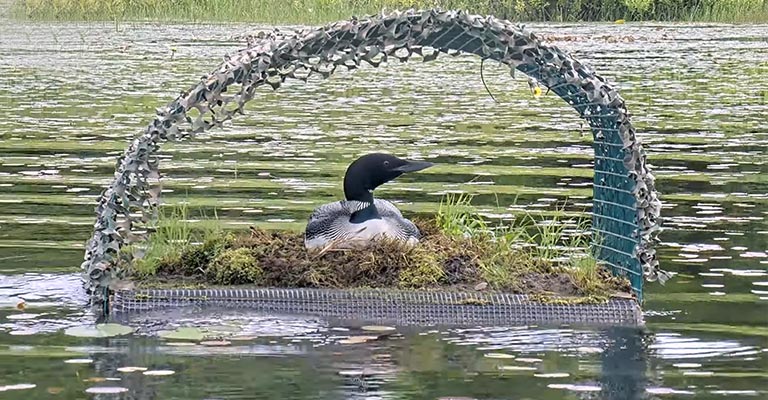
Loons typically nest near freshwater lakes and ponds, choosing secluded spots along the shorelines.
They construct their nests close to the water’s edge, often using floating vegetation or reeds to create a shallow platform. Loons lay a clutch of usually two eggs, which are incubated by both parents for about four weeks.
Once hatched, the chicks are precocial and able to swim shortly after birth. The parents diligently care for and protect their young, teaching them essential survival skills such as fishing and diving.
Loons’ nesting habits reflect their strong connection to freshwater ecosystems and their importance as iconic symbols of wilderness and conservation.
| Nesting Details | Facts |
| Clutch Size | Usually 1-2 eggs |
| Number of Broods | Typically 1 per breeding season |
| Egg Length | Approximately 7 – 9 centimeters |
| Egg Width | Approximately 5 – 6 centimeters |
| Incubation Period | Around 25 – 30 days |
| Nestling Period | Approximately 8 – 12 weeks |
| Egg Description | Elliptical, with a greenish or brownish coloration with dark spots |
| Nest Location | Near water bodies, on floating platforms or shores with vegetation |
| Nest Material | Built from vegetation, reeds, and mud |
This table provides a concise overview of the nesting habits and characteristics of Loons, including details such as clutch size, egg dimensions, incubation and nestling periods, as well as nest location and parental care behavior.
10 Fun Facts About Loons
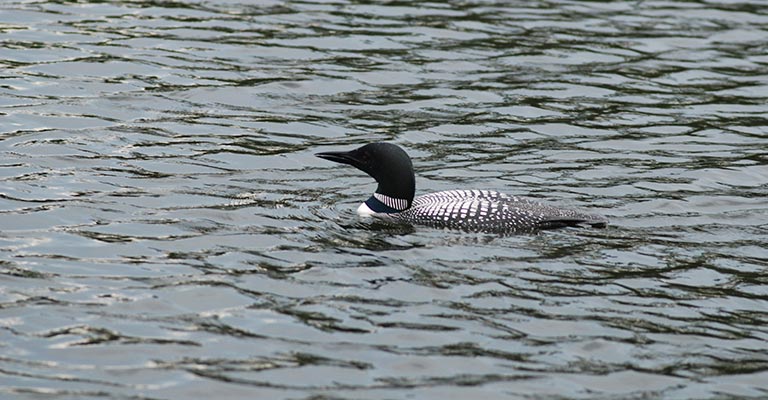
Loons, with their haunting calls and elegant dives, are fascinating birds of the Northern Hemisphere. Here are 10 intriguing facts that shed light on the unique characteristics and behaviors of these iconic waterfowl:
Migratory Wonders
Many loon species undertake impressive migrations, traveling thousands of miles between their breeding and wintering grounds. Some individuals migrate from the Arctic to as far south as Mexico or the Caribbean.
Family-Oriented
Loons exhibit strong family bonds, with parents sharing incubation and chick-rearing responsibilities. Young loons often remain with their parents for several months after hatching, learning essential survival skills before venturing out on their own.
Diving Depth
These birds are exceptional divers, capable of descending to depths of over 200 feet in search of prey. Their streamlined bodies, waterproof feathers, and specialized physiology enable them to navigate underwater with precision and efficiency.
Echoing Calls
The haunting calls of loons are a hallmark of their presence on tranquil lakes. Their vocalizations serve various purposes, from territorial displays to communication with mates and offspring. The eerie quality of their calls adds to their mystique.
Waterproof Feathers
Loons possess dense, waterproof plumage that keeps them buoyant and insulated while swimming. Specialized oil glands near their tails help maintain the integrity of their feathers, ensuring they remain dry and functional even after prolonged dives.
Nest Builders
During the breeding season, loons construct nests near the water’s edge using vegetation, twigs, and other natural materials. These nests are often concealed among reeds or floating vegetation, providing protection from predators.
Precocial Chicks
Loon chicks are precocial, meaning they are relatively mature and mobile shortly after hatching. Within hours, they can swim and dive alongside their parents, although they still rely on their parents for warmth and protection.
Territorial Displays
Adult loons engage in elaborate territorial displays, including head shaking, bill dipping, and underwater chasing. These behaviors help establish and defend territories against intruders during the breeding season.
Longevity
While the average lifespan of a loon is around 15 to 30 years, some individuals have been known to live much longer. The oldest recorded loon lived to be over 30 years old, highlighting their resilience and adaptability.
Cultural Significance
Loons hold cultural significance in many indigenous cultures across their range. They are often revered as symbols of wilderness and spirituality, inspiring art, folklore, and conservation efforts aimed at protecting their natural habitats.
Wrapping Up
The enchanting world of loons captivates both bird enthusiasts and casual observers alike.
From their haunting calls echoing across tranquil lakes to their graceful dives and intricate family dynamics, loons epitomize the beauty and resilience of avian life in freshwater habitats.
As ambassadors of wilderness and symbols of cultural significance, these remarkable birds inspire awe and reverence, reminding us of the interconnectedness of all living beings and the importance of preserving natural ecosystems.
By understanding and appreciating the fascinating life history of loons, we can foster greater awareness and stewardship to ensure their continued presence in our shared natural heritage for generations to come.